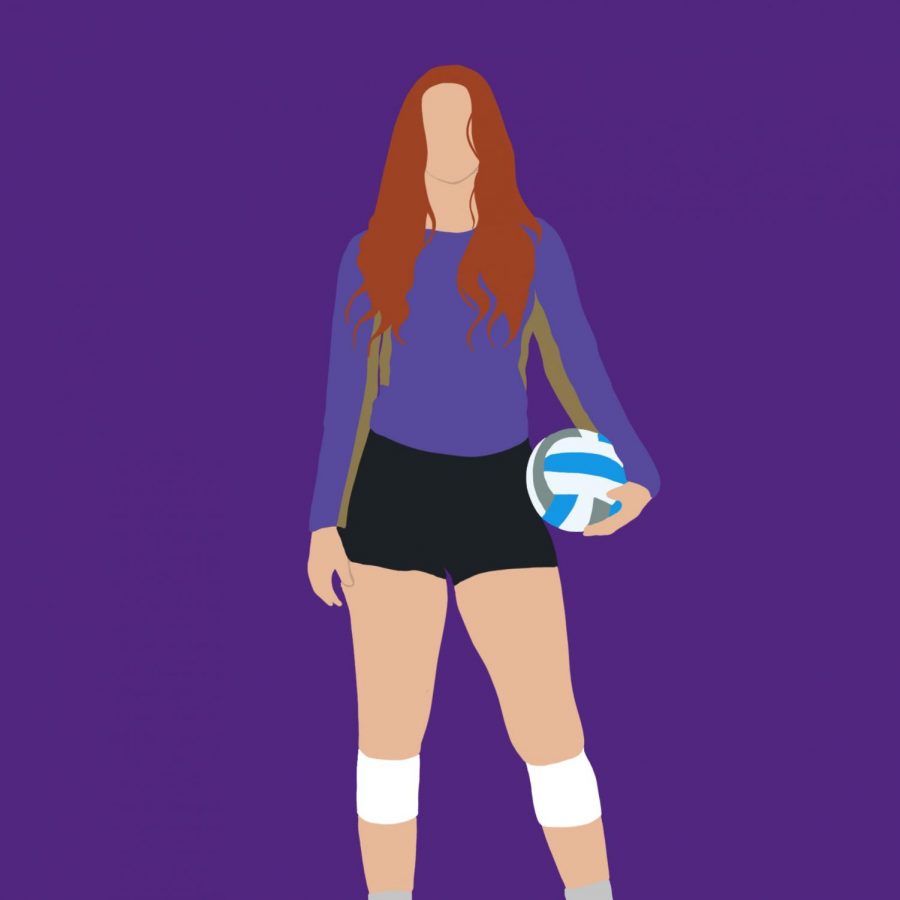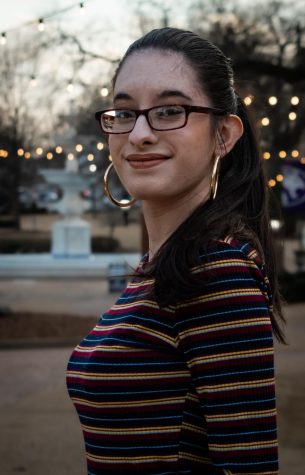The Dream Team: Athletic Trainers
Career Spotlight
September 16, 2021
Where does a football player go if he’s pulled a muscle? Where does a basketball player go if they’re sore from a difficult practice? Who prevents volleyball players from getting injured? The answer is Josh Penny and his team.
Penny is the Associate Athletic Director for Sports Medicine; he primarily works with football and supervises all of the other teams. Penny’s job is to care for athletes as well as prevent and treat injuries, among many other things. Student athletes can visit the training room in the Hal Self field house to treat injuries or to keep up maintenance. An alumnus of both University of West Alabama (undergraduate) and University of North Alabama (graduate), he has been a part of the UNA staff for 18 years. In the 2020-21 school year, he directed the athletic department’s battle against COVID-19.
“Our job is to keep the student athletes on the field and on the court,” Penny said. “That’s basically our bottom line job.”
Penny’s interest in sports medicine began after a soccer injury in high school. The athletic trainer for his high school was able to return Penny to the soccer field. Through the trainer, he was introduced to the practice of sports medicine — particularly physical therapy and athletic training. Penny’s love for sports led him to choose athletic training as a career, keeping him outside and close to the field.
“I didn’t feel like being inside of a clinic was my type of setting,” Penny said. “I like being around the student athletes. That’s why I chose it and I don’t regret a day of it.”
Penny’s days are busy. As previously mentioned, he is in charge of the football team’s athletic training alongside two assistants. He supervises all of the other sports’ athletic trainers as well. Most days during football season start at 6 a.m. Athletes come by for treatments until 8:30 a.m. That is followed up by a football staff meeting where the day is discussed, Penny updates the coaching staff on injuries, and a weekly agenda is set up. Depending on the day, Penny may have more meetings following up. Afterwards, he fills out paperwork. In the meantime, his assistants are taking players to visit the doctor (most likely at the Bone & Joint Clinic). At about 1 p.m., the team begins taping athletes and getting ready for practice. Some student trainers begin setting up the field with water and everything the athletic trainers need. At about 3-3:30 p.m., Penny heads to the practice field and stays there for the length of the practice (usually about 2 hours). After that, the team puts everything away for the next day and does post-practice treatment for the athletes. At about 6:30-7 p.m., the athletic trainers are finally done for the day.
A week during football season is extremely busy. Mondays are “off days” (paperwork and things of that nature are done). Tuesdays, Wednesdays, and Thursdays are practice days. Fridays for home games begin with treatments for players at 12 p.m. and an hour-long walkthrough practice afterward with the game being played the following day at Braly Stadium. The athletic trainers arrive about 6 hours before kickoff on game days so they can transfer all of their equipment from the training room to Braly. According to Penny, Saturdays are long days. They can be at work for up to ten hours. Sundays are for training and post-game treatments that last from 11 a.m. to about 5:30-6 p.m. They travel with the team for away games, leaving on Friday and returning on Saturday. For the sports medicine office, they seldom have downtime.
The office has also advanced over the years that Penny has worked there. Cupping therapy has become popular among the student athletes, though it has only been introduced to UNA in the last two years by a graduate assistant from LSU. What cupping therapy does is increase blood flow and promote healing to the areas that they are applied to. It is also an efficient form of treatment, as it only takes a few minutes. Another interesting thing the office boasts is Normatec compression boots. They increase blood flow and help remove lactic acid by shooting compressed air up and down the legs. In Penny’s opinion, it’s as if students are leaving with a whole new leg after using the boots.
To Penny, the worst injury to treat would be a dislocated knee. When this injury occurs, all four ligaments in the knee are torn. If they happen to tear the leg’s main nerve, the leg risks amputation. Penny has never seen one and hopes he never does, but he has spoken to physicians who have treated it. He recalled the injury to McKenzie Milton, quarterback for University of South Florida, who was unable to play again until the 2021 football season after being injured in 2018 while playing for University of Central Florida. He did tear the nerve in his leg, but miraculously recovered and is playing at USF as a graduate transfer.
Penny’s favorite part of his job is seeing an injured student athlete who has worked extremely hard finally return to their sport. To him, seeing an athlete who has gone through surgeries and physical therapy make plays and run on the field is one of the best parts of his job. He is able to establish a meaningful rapport with the athletes he works with. Mutual respect and the gratitude that the athlete has for what Penny does for them is the basis of it.
“The most fulfilling thing is when you help a student athlete and they just say ‘thank you,’” Penny said. “Just a simple ‘thank you’ from a student that I’m helping is gratifying for me.”
Cody Partin and Melanie Schaefer work alongside Penny in the athletic training office. Partin is assistant athletic trainer and primarily covers men’s basketball and men’s and women’s cross country. He has been working at UNA for 8 years. Schaefer is also an assistant athletic trainer, but she works with women’s soccer. She has been working in the office since Aug. 2020.
Their mornings start with open rehab treatment, where athletes come in and complete whatever treatment and maintenance they require. In the afternoon, they cover practice and weightlifting sessions. Game days, when in season, are usually in the evening or afternoon.
In Partin’s junior year of high school, he broke his ulna (a bone in the forearm) while playing football and played with the injury for 8 weeks. Upon seeing a doctor, he worked with athletic trainers and began researching the field out of curiosity. He set out to go into athletic training during his years at Valdosta State.
“I found a real passion for helping and caring for people,” Partin said. “We see them at their lowest and we see them at their highest. That’s a great thing to watch and be a part of.”
For Schaefer, she grew up around the medical field. Her mother was an RN, and Schaefer fell in love with the environment of helping people. She grew up playing soccer as well and combined her two interests by athletic training after being introduced to the field through a sports medicine class in high school. She fully committed to the practice in her sophomore year of college.
Both of them love being able to help the student athletes. Like Penny, Partin and Schaefer love being able to see struggling athletes overcome their injuries and play again. They care for them and aid them in performing the best they can when game day comes around. In Schaefer’s opinion, the best part of athletic training is the uniqueness of the field.
“We’re a jack of all trades,” Schaefer said. “We’re a physical therapist at one point. we’re a mental health advocate at another point, we provide emergency care on a field. We are their parents in a sense when we take them to doctor’s appointments. We advocate for them in so many different ways. You can’t describe the relationship that an AT has with the athletes.”
The bond that they have with the athletes keeps the entire staff doing what they do. On any given week, an athlete will have at least a day that they don’t see their coach, but they still visit the athletic trainers. The athletic training office’s doors seem to always be open and bustling with athletes. Without the trainers, athletes wouldn’t be able to perform to the best of their abilities when game days come around. Athletic training is such a special field with such special people who work within it. There is a certain attentiveness and caring attitude that goes into what they do to help the students that need them most.
“I love what I do,” Partin said. “I wouldn’t have been doing it for so long if I didn’t.”




